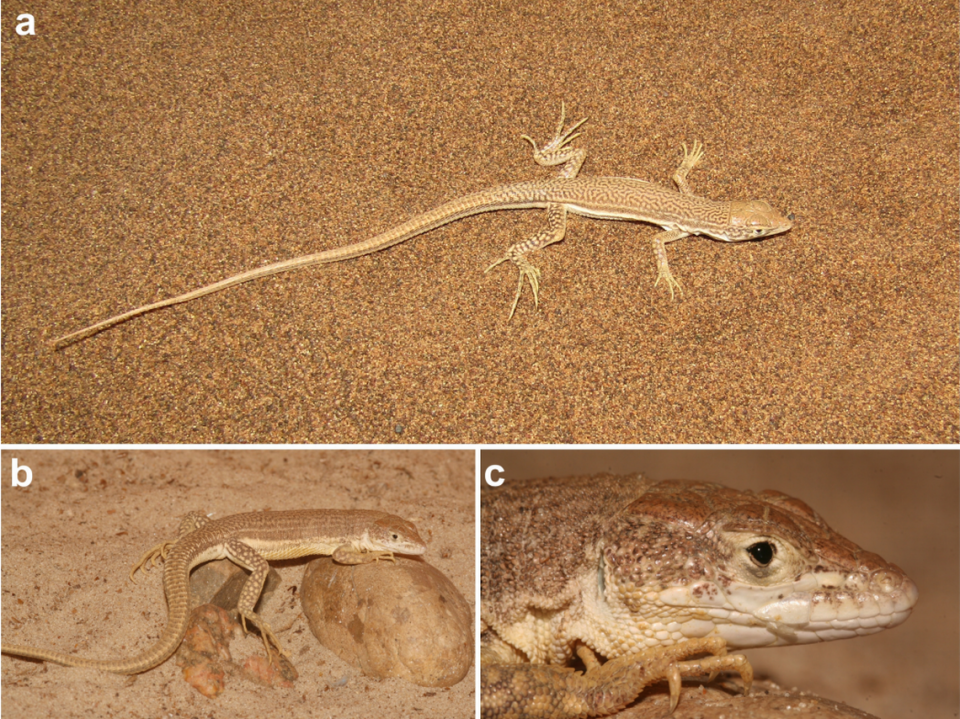Creature with hieroglyphic-like pattern found on Iran sand dunes. It’s a new species
As the sun beat down on a sand dune in Iran, a patterned creature rested in the shadow of a bush. Nearby scientists spotted the long-tailed animal — and discovered a new species.
Researchers ventured into the desert of South Khorasan province on a wildlife survey in 2010, according to a study published Nov. 10 in the journal Zootaxa. They stopped along a remote road to search for sand-dwelling reptiles and amphibians.
On a nearby sand dune, researchers found 10 lizards with a unique pattern, the study said. They took a closer look and realized they’d captured a new species: Eremias graphica, or the hieroglyphic racerunner lizard.
The hieroglyphic racerunner lizard can reach about 7 inches in length, researchers said. It has a tail “about twice as long as (its) body,” smooth scales and a “sand-colored” body.
Photos show hieroglyphic racerunner lizards perched on sand and rocks. The lizards are mostly beige with darker brown squiggles down their backs. Their long tails trail behind them. A close-up photo shows the lizard’s claws and brown eyes.
Researchers described the lizard’s pattern as hieroglyphic-like, wavy and “worm-shaped.” This differs from other racerunner lizards that have mostly striped patterns, the study said.

Researchers said they named the new species after the Greek word “graphikos,” which means “‘drawn’ or ‘written’,” because its pattern “resembles artificial hieroglyphs.”
Hieroglyphic racerunner lizards live around desert bushes on sand dunes, the study said. The lizards use the bushes as shade, shelter, “a source of its insect prey ” and place to burrow. The animals spend most of their time under bushes but are active for a few hours in the morning and evening.
The hieroglyphic racerunner lizard has only been found along one road near Tabas city, researchers said. The city is in South Khorasan province and about 350 miles southeast of Tehran.
The new species was identified by its coloring, pattern, scales, size and other subtle physical features, the study said. DNA analysis found the new species had between about 6% and 21% genetic divergence from other racerunner lizards.
The research team included Valentina Orlova, Eskandar Rasegar-Pouyani, Khosrow Rajabizadeh, Hossein Nabizadeh, Nikolay Poyarkov, Daniel Melnikov and Roman Nazarov. Researchers also discovered another new species of striped racerunner lizard.
Racerunner lizards are named for their “ability to run at impressive speeds,” according to Britannica. “Some species can run almost 28 km (17 miles) per hour over short distances.”
Pregnant creature — with ‘sandpaper’-like skin — discovered as new species in Angola
‘Flame-colored’ creatures found mating near mountain stream turn out to be new species
‘Miniature’ mountain creature — with ‘squeaker’-like call — discovered as new species


